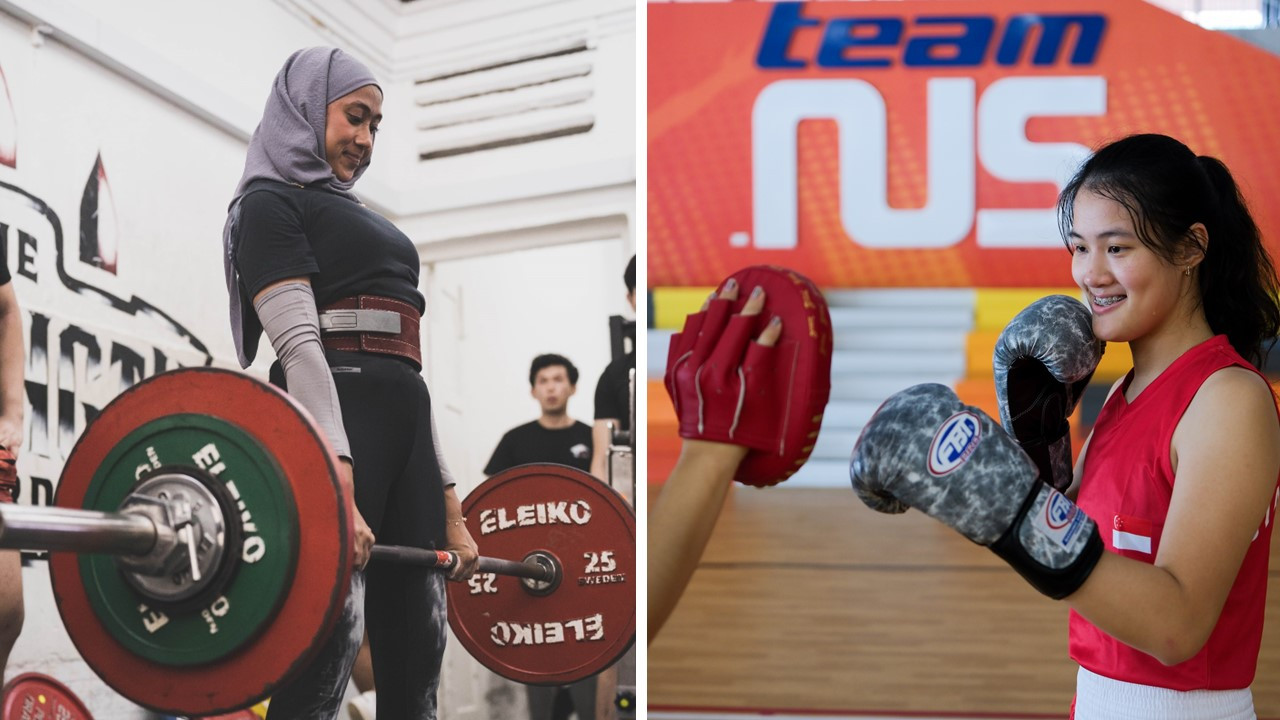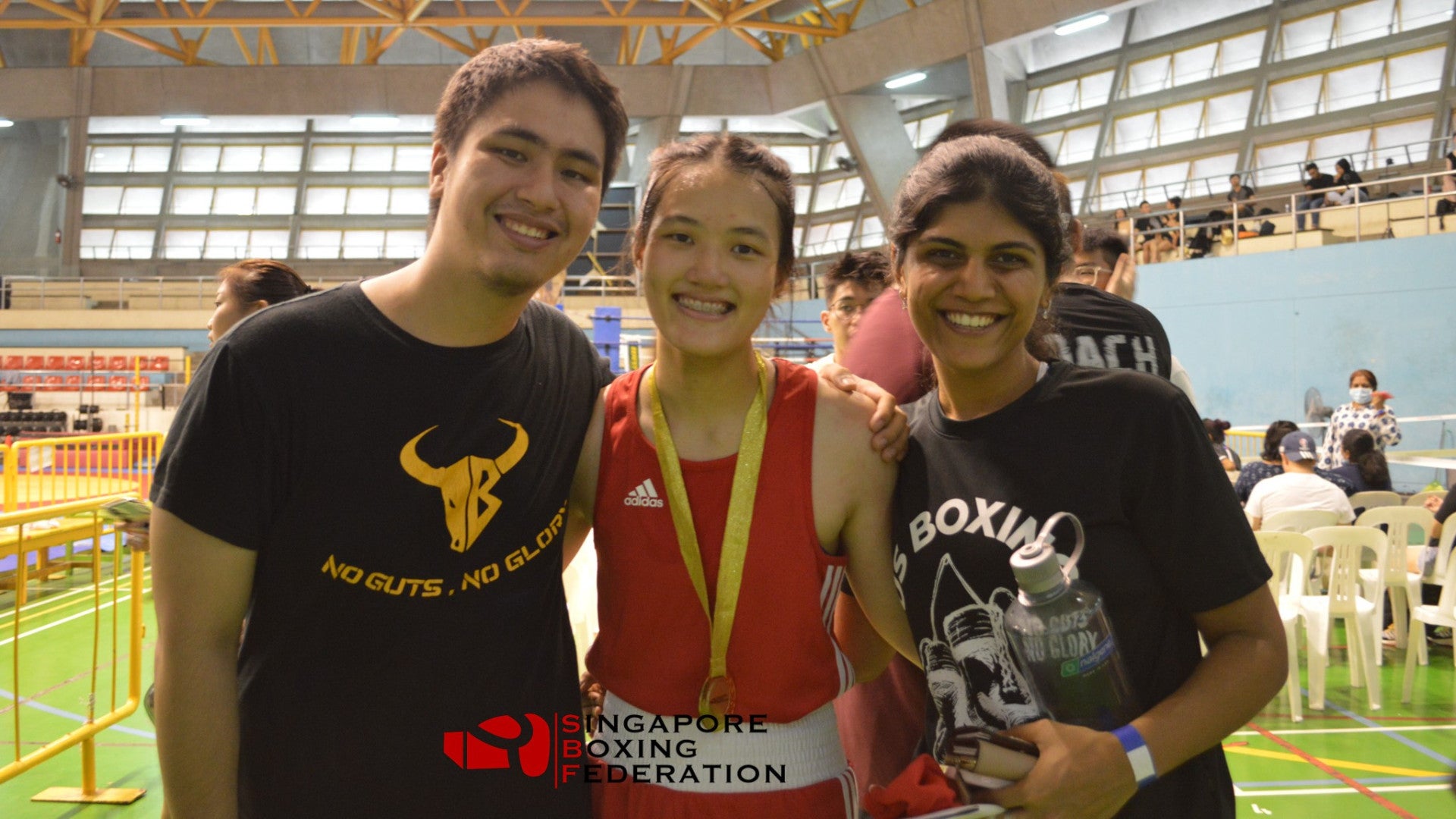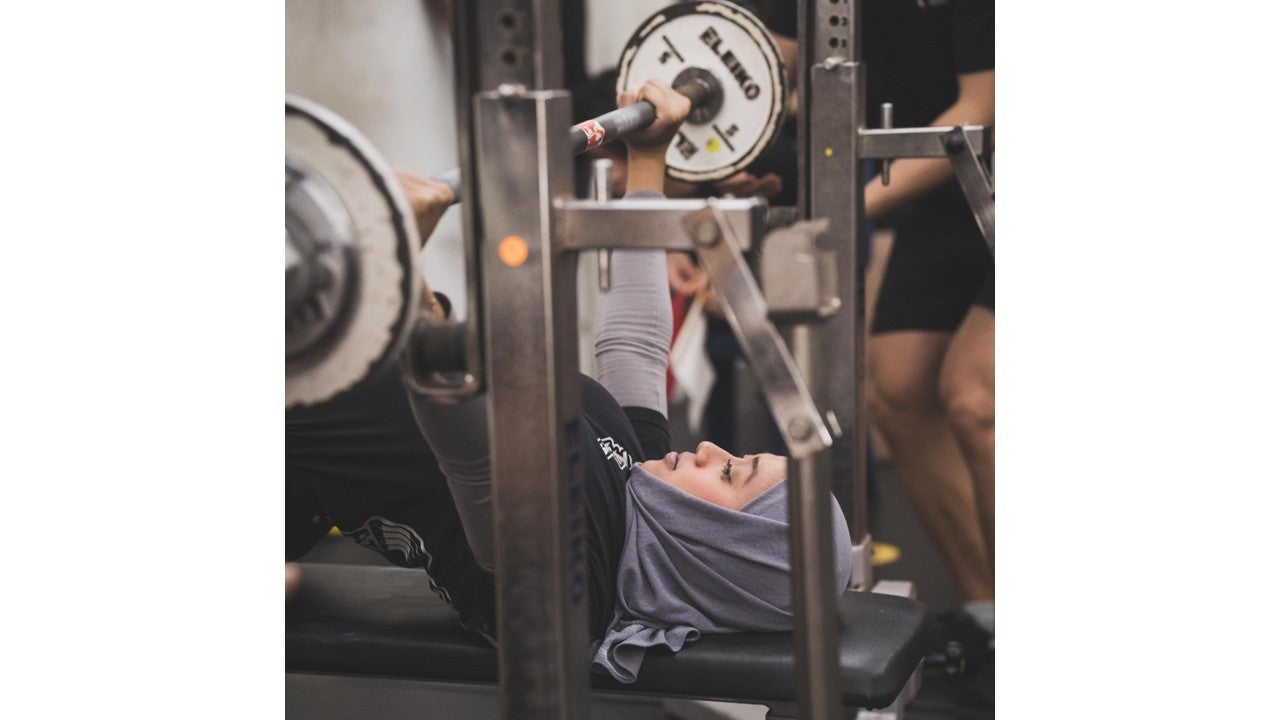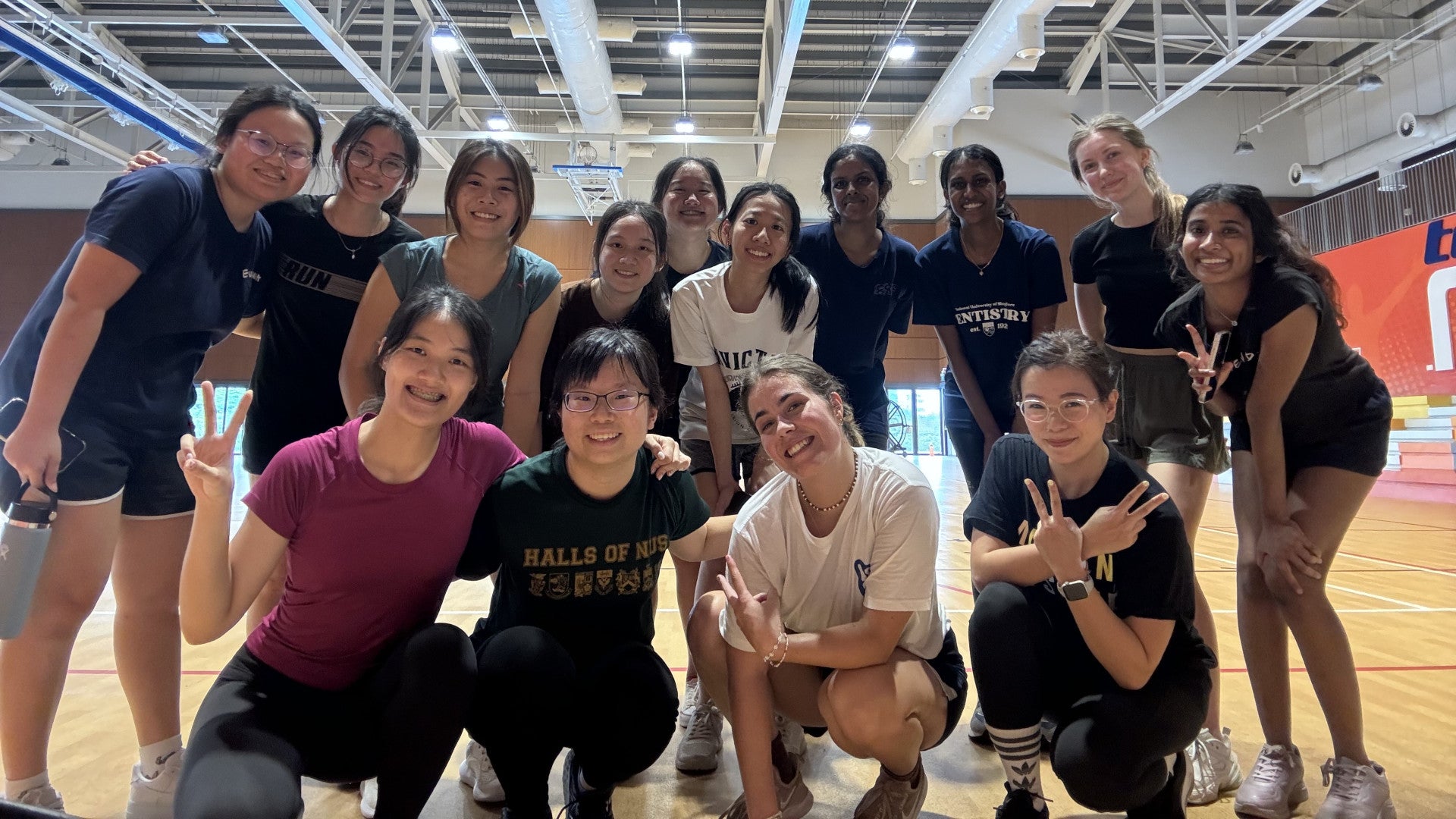Breaking stereotypes: Where femininity and strength go hand in hand
August 19, 2024

Powdered hands grip the barbell loaded with several weight plates in primary colours – seemingly cheerful shades that belie their true weight. With determination and remarkable speed, muscles flex and the barbell is hoisted above the ground. There it hovers, for a few deciding moments, before it falls to the ground with several thuds, the weight causing it to bounce off the floor several times.
In another arena, on another day, quick feet clad in ankle-high shoes shuffle speedily back and forth in rhythm. With unexpected swiftness and agility, an arm swings out and up, connects with its target, and the opponent stumbles backwards. The shuffle rhythm resumes, as though in a dance.
Taking their mark in the powerlifting and boxing arena, two TeamNUS athletes are redefining perceptions in these typically male-dominated sports within the NUS community and beyond.
Full commitment
Boxing is a dynamic and strategic combat sport which requires more than physical strength. In addition to strong and accurate punches, there is also much strategy, skill, and endurance involved.
Behind the strength and agility that boxing requires are hours of training in the gym, and discovering enjoyment and talent in the sport was serendipity for Berniss Chow, final-year undergraduate in Data Science and Analytics, who took up boxing only in her first year of university to try a new sport and hopefully make new friends.
Since then, Berniss has grown from strength to strength to become a national champion, winning her first national championship in the featherweight category (54-57kg) in 2023; representing Singapore in international competitions; as well as serving as President and Vice-President of NUS Boxing in 2022 and 2023 respectively, where she spearheaded an initiative to organise boxing workshops for female students in NUS.

The same spirit of curiosity and adventure brought second-year Nursing undergraduate Nur Syafiqah Mohammed Shamsul to powerlifting. The regular gym-goer was looking to exercise in a more structured and purposeful way, and she had her first glimpse of the sport just a year ago through her brother, who started powerlifting first.
Heavy weights are a central feature of powerlifting, a strength sport involving three main lifts – a squat, bench press, and a deadlift – where athletes aim to lift as much weight as possible in each of these lifts. The overall winner in each weight class is determined by the total weight lifted across all three lifts.
Since taking to the barbells herself, Syafiqah has committed to almost daily consistent work in the gym with gradual increments in weights, to get to where she is today. She now trains four times a week and hopes to achieve her dream of representing NUS at a national powerlifting competition someday.

Giving and gaining strength
Beyond the combating and heavy lifting, both Berniss and Syafiqah have found support and encouragement from the camaraderie they share with their teammates and training buddies. From helping each other to ‘spot’ – supporting another athlete as they lift, to enable them to lift or push more than they could normally do safely – to having the company of teammates at training after a long day of school, these bonds have empowered them with the confidence to be their best.
Being competitive athletes comes with lifestyle changes as well. Time is a common sacrifice made by athletes fully committed to their sport, for hours of effort are put in exchange for mere minutes to perform during a competition. Be it through daily long commutes between training venues, school and home, waking up and going to bed far earlier than their peers, balancing the sport with academic requirements, or having less time with family and friends due to training and competition commitments, time management must be a consistent effort.
Sacrifice can also come in the form of food, as Berniss recalled having to pass up on the favourite food trends of her peers, mala hotpot and Korean barbecue, when weight cutting for her fights. Nonetheless, both Berniss and Syafiqah acknowledge that these lifestyle changes have positively impacted them, and thus made them more determined and grounded to achieve their sporting goals.
‘I’m not a dancer’
Stereotypes abound for a female powerlifter, especially those pertaining to physical appearance. During a lighthearted introductory game of ‘two truths and a lie’ with her new friends some years back, Syafiqah’s newfound friends guessed that her statement ‘I do Malay Dance’ was true, and ‘I’m a powerlifter’ the opposite. Imagine their surprise when they discovered that behind Syafiqah’s slim and lithe frame was a competitive powerlifting athlete.
“Many people have the perception that female powerlifters must look a certain way, such as being muscular or having a specific body type. One common misconception is that lifting heavy weights will make women bulky,” shared Syafiqah.
“In reality, powerlifters come in a diverse range of shapes and sizes, and appearance does not determine one's ability to excel,” she added. “The sport focuses on maximising the body’s ability to lift heavy weights efficiently, regardless of size or appearance.”

Being in traditionally male-dominated sports involving strength and combat has also presented both athletes with the opportunity to consider the concept of femininity in this context, and what it means to be a female athlete, often a minority, in their respective sports. Syafiqah confessed to not openly sharing with others in person or on social media about her powerlifting activities, to avoid comments on her sporting pursuits and workouts in the gym.
Meanwhile, Berniss has received comments such as acquaintances claiming that they ‘are afraid to mess with Berniss’ or ‘could probably beat her in a fight without any training’. Although she understands such comments could be good-natured teasing, these words could also dismiss the hard work and determination female boxers put in to develop key attributes such as agility and speed that they bring to the ring.
“Despite these stereotypes, the growing visibility and success of female boxers are helping to break down these misconceptions,” said Berniss, who partnered with another female boxer, former national boxer and current coach of the female national boxing team Miss Leona Hui, to organise female boxing workshops at NUS. “Female athletes in boxing are demonstrating that they can compete at the highest levels and bring unique strengths to the sport. By continuing to challenge these stereotypes, we are paving the way for future generations of female boxers.”

Both Syafiqah and Berniss concur that strength and femininity go hand in hand - female athletes can be skilled and strong, and still embrace their femininity, and many would also consider their strength a core part of their identity. The empathy, tenacity, and quiet grit developed through their sports may reflect the qualities often seen in female roles – such as mothers, daughters, sisters, friends, and teammates.
When asked about their sporting heroes, instead of citing exceptional world-renowned athletes, both athletes identified their close teammates and friends as people who continue to inspire and motivate them to push boundaries in their sport and as individuals. By highlighting their grit, determination and camaraderie forged through shared training and competition challenges, as well as the tenacity in overcoming injuries, Berniss and Syafiqah embody the lesson that strength is not only physical, but can also be found in pushing through the mental and emotional requirements of being sportspeople, and amongst teammates and friends who mutually inspire each other.
This article is the second in a two-part series on Breaking Stereotypes. Read Part 1 here.
Source: NUS News

